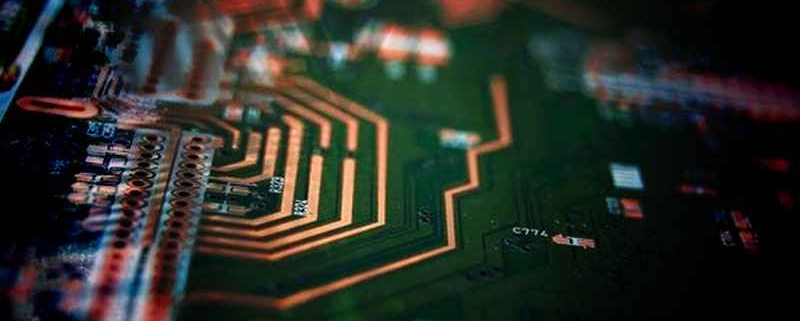PCB production Steps
All PCB’s are made by bonding a layer of copper over the entire substrate, sometimes on both sides. Etching process has to be done to remove unnecessary copper after applying a temporary mask, leaving only the desired copper traces.
Though there are many methods available for etching, the most common method used by electronics hobbyists is etching using ferric chloride ir hydrochloric acid. Both are abundant and cheap. Dip the PCB inside the solution and keep it moving inside. Take it out at times and stop the process as soon as the copper layer has gone. After etching, rub the PCB with a little acetone to remove the black colour, thus giving the PCB a shining attractive look. The PCB layout is now complete.
The components that have to be attached to the multi-layered PCB can be done only by VIAS drilling. That is, a pated-through hole is drilled in the shape of annular rings. Small drill bits that are made out of tungsten carbide is used for the drilling. A dremel drill press is normally used to punch the holes. Usually, a 0.035 inch drill bit is used. For high volume production automated drilling machines are used.
Sometimes, very small holes may have to be drilled, and mechanical methods may permanently damage the PCB. In such cases, laser drilled VIAS may be used to produce an interior surface finish inside the holes.
The outer layer of the PCB contains copper connections (the part where the components are placed) which do not allow solderability of the components. To make it solderable, the surface of the material has to be plated with gold, tin, or nickel.
The other areas which are not to be solderable are covered with a solder resist material. It is basically a polymer coating that prevents the solder from bringing traces and possibly creating shortcuts to nearby component leads.
In industrial applications, PCB’s are tested by different methods such as Bed of Nails Test, Rigid Needle adaptor, CT scanning test, and so on. The basic of all tests include a computer program which will instruct the electrical test unit to apply a small voltage to each contact point, and verify that a certain voltage appears at the appropriate contact points.



